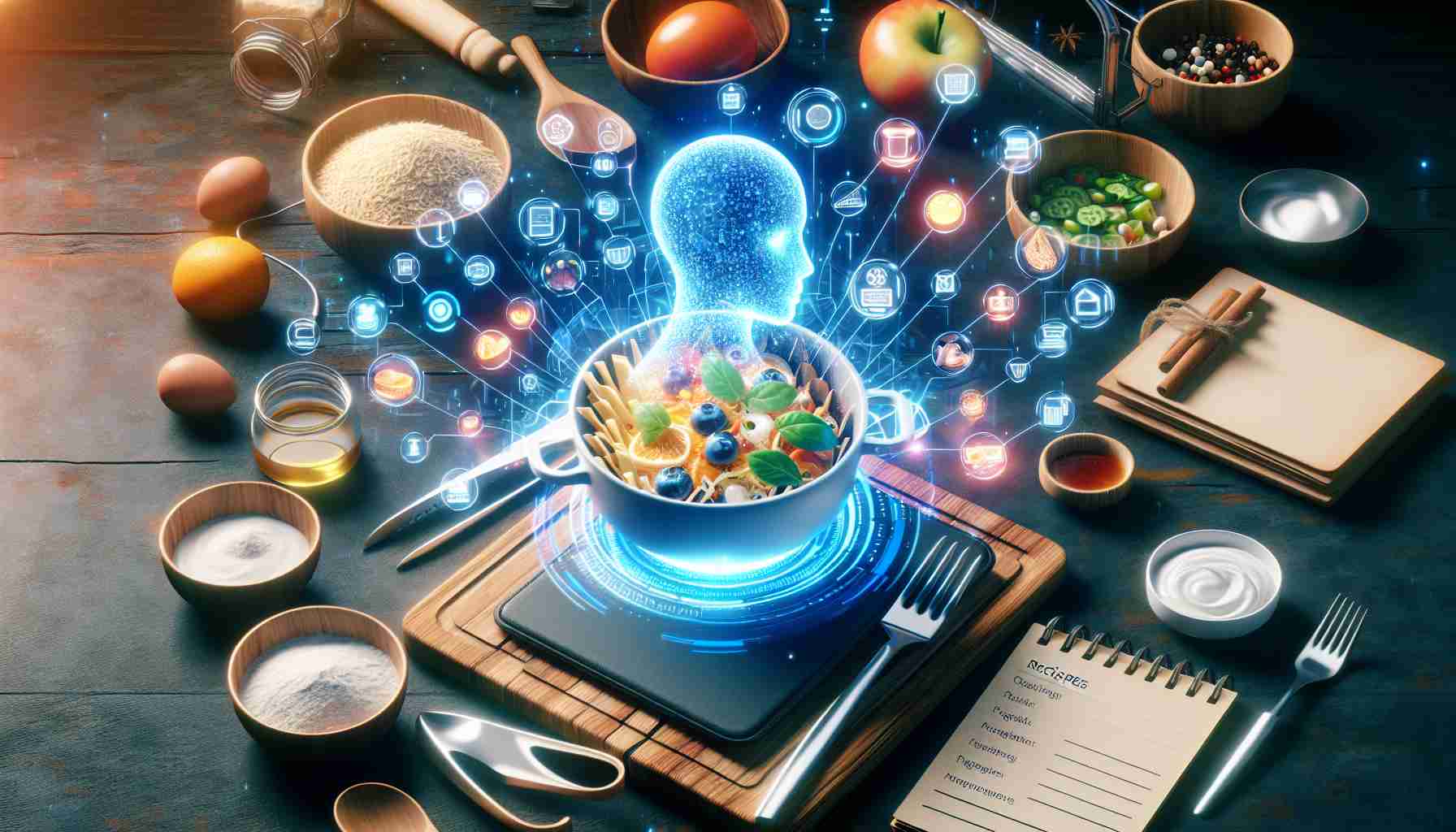- AI-generated recipes are gaining popularity, offering experimental and unique culinary creations.
- These digital chefs explore unconventional ingredient combinations like chocolate basil pasta or grapefruit avocado toast.
- The intersection of technology and cooking invites a reevaluation of creative culinary boundaries.
- AI recipes encourage embracing the unexpected, fostering exploration and risk-taking in the kitchen.
- They provide a playful experience, blending human curiosity with machine creativity for potential new favorite meals.
Scrolling through Facebook can often feel like navigating a bustling bazaar of ideas and trends. Amidst the clamor, a peculiar phenomenon beckons: AI-generated recipes are capturing the imaginations — and kitchens — of curious cooks worldwide. Imagine a digital chef, tirelessly crafting culinary delights, its cold algorithms giving way to the warm embrace of an oven or stovetop. This might sound like science fiction, yet it’s a tasty reality.
As AI delves into gastronomy, it embarks on an experimental dance with flavor and texture, combining ingredients in ways a human chef might never consider. The result? Delectable surprises and sometimes amusing mishaps. Imagine opening your browser to find suggestions like chocolate basil pasta or grapefruit avocado toast lighting up your screen. Such combinations might raise an eyebrow, but they invite a daring taste test nonetheless.
This curious intersection of technology and taste challenges us to reevaluate creative boundaries. It’s a playful reminder that the essence of cooking lies not merely in tradition but in exploration and risk-taking. These AI-generated recipes encourage culinary adventurers to embrace the unexpected. With each dish, there’s the potential for discovery, laughter, and perhaps a new favorite meal. In a world where technology often feels overwhelming, these whimsical recipes provide a light-hearted reminder of its potential for joy.
So, on your next culinary escapade, dare to download one of these avant-garde recipes. Perhaps you’ll create something unexpectedly delightful, reminding yourself of the boundless possibilities when human curiosity meets machine creativity.
Are AI-Generated Recipes the Future of Cooking?
How AI-Generated Recipes Work
AI-generated recipes leverage machine learning and natural language processing to analyze vast datasets of existing culinary combinations. Trained on millions of recipes, these AI systems predict flavor profiles and suggest unconventional ingredient pairings, such as vanilla and tomato or coffee and orange. As users input their preferences or available ingredients, AI can produce recipe suggestions that blend tradition with innovation.
Real-World Use Cases
1. Recipe Personalization: AI allows for increasingly personalized meal planning. Individuals with dietary restrictions or specific preferences input parameters, and AI suggests compatible recipes, effectively catering to vegan, gluten-free, or keto diets.
2. Restaurant Menu Development: Chefs and restaurateurs can use AI-generated recipes to create novel dishes that stand out in a competitive market, offering unique culinary experiences.
3. Sustainable Cooking: By suggesting recipes based on available or seasonal ingredients, AI can help reduce food waste and promote sustainable cooking practices.
Industry Trends and Market Forecast
The AI in the food and beverage market is expected to grow significantly. According to a report by Allied Market Research, this market reached $3.69 billion in 2020 and is projected to reach $83.58 billion by 2031, growing at a CAGR of 38.0% from 2022 to 2031. The increase in demand for personalized meal planning and the emergence of cloud-based AI services are key growth drivers.
Pros & Cons Overview
Pros:
– Innovation: Promotes creativity by suggesting unusual and innovative ingredient combinations.
– Customization: Tailors recipes to individual dietary needs and preferences.
– Convenience: Provides quick suggestions based on available ingredients.
Cons:
– Authenticity: May lack the depth of flavor and cultural authenticity found in traditional culinary practices.
– Trial and Error: Some combinations might not translate well into delightful dishes, requiring user experimentation.
– Accessibility: Users need internet access and digital literacy.
Security & Sustainability
AI-generated platforms should prioritize user data privacy, especially when users input personal preferences or dietary restrictions. Security measures should ensure data isn’t shared without consent. Moreover, promoting ingredient suggestions based on local and seasonal availability aligns with sustainable consumption and reduces environmental impact.
Expert Insights & Future Predictions
Culinary experts suggest that while AI-generated recipes won’t replace human chefs, they will enhance the cooking experience by providing inspiration and encouraging experimentation. As machine learning models improve, they’ll likely adapt to regional taste profiles and finer nuances in flavor balancing, offering more sophisticated and culturally relevant recipes.
Actionable Recommendations
– Experimentation: Embrace AI-generated recipes to try new flavors and expand your culinary repertoire.
– Balance: Use AI suggestions as a base, but don’t shy away from modifying according to personal taste.
– Integration: Incorporate AI-generated recipes in weekly meal plans to diversify your diet.
AI in gastronomy presents a fun and innovative way to rethink cooking, inviting curiosity and creativity. Whether you’re an amateur cook or a professional chef, these digital culinary tools can offer a new perspective on the age-old art of cooking.
For further exploration into AI and its applications, visit IBM or TechCrunch.
